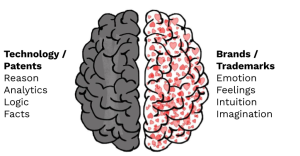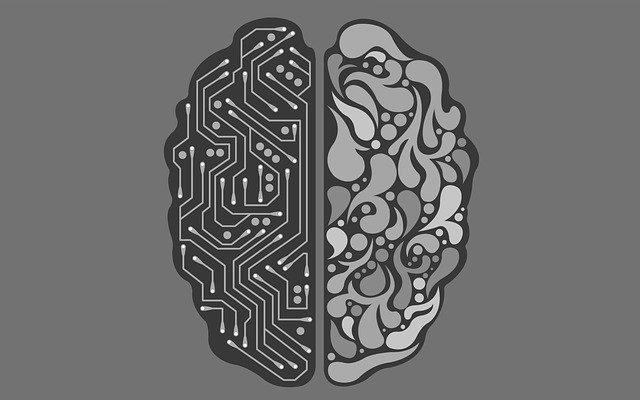Trademarks and patents are both intellectual property assets, but they protect very different things. Patents protect technological inventions – for example, how a product or its feature works, whereas trademarks protect brands, such as product names and logos. They both protect the investments a company does in R&D (innovation -> patents) and marketing (brands -> trademarks).
For small companies, it is often easier to be technologically different or better than having a globally known megabrand. On the other hand, a strong brand does not necessarily have to be global, a brick and mortar corner shop can have an extremely powerful local brand.
Here’s one way of illustrating the battle between technology and brands:

According to Harvard professor Gerald Zaltman, as much as 95% of our decision making takes place below the conscious level. He writes:
For example, consumers do not consciously assess a car’s benefits attribute by attribute and decide whether to buy it. Instead, their emotions — the desire for happiness, prestige, and so on — play a bigger role than logic in the purchase decision.
Much more important is what kind of feelings a product or service can invoke than what kinds of features and technology it has. While innovations and technology are needed for building great products and services, they do not actually get people to buy them.
Emotion is a necessary condition for decision making
In 1848, a railway worker Phineas Gage was involved in an accident where a steel rod (6 kilograms in weight, 1 meter in length) shot through his head. The rod entered through the cheek, pierced the brain and landed some 25 meters away from Mr. Gage. He miraculously survived the accident, but he had lost a part of his brain (the ventromedial prefrontal cortex) and was after the accident unable to control his emotions and make rational decisions.
In 1994 brain surgeon Antonio Damasio had a patient with a brain tumour. The tumour was operated by removing the same part of the brain that Phineas Gage had lost 150 years earlier. The patient survived, but after the operation, he was also unable to control his emotions and make rational decisions. In his book Descartes’ Error: Emotion, Reason, and the Human Brain, Damasio showed how emotion and decision making is intrinsically linked. If you eliminate emotions and rely only on reason, there are so many factors to be taken into account that even the banalest decisions become impossible.
Conclusion
Emotion is a shortcut for making decisions. If there is a conflict between emotion and reason, in most cases emotion has the upper hand. It is not difficult to think of everyday decisions where people do irrational things because of how they make them feel (for example, eating unhealthy food). This is also why all companies, small businesses included, should put more focus on building brands that evoke emotions. An average product with a great brand gets chosen over a great product with an average brand every time. This is because the majority of decision making is subconscious and impossible without emotion.



